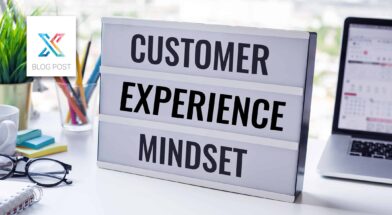We’ve all been there. You’re standing at a concierge desk or a check-out counter or you are on the phone with customer service, and it is like talking to a wall. Some policy or procedure or bureaucratic rule has trumped common sense.
A week ago, I was preparing to go on a mini vacation. After digging through the clearance rack, which somehow is already full of summer clothes – it’s barely July, people! I found a couple great deals. I made my purchases and headed toward the exit… until I spotted another clearance rack near the window display. How had I missed it? I headed over to examine this undiscovered potential treasure trove. Lo and behold, I found the same exact pair of jean shorts I had just bought, but in a much better color – same size, same price, same fit, different wash. I head to the checkout to make the exchange.
“All clearance sales are final,” the store clerk told me. “There are no returns and no exchanges permitted.” Exasperated I exclaimed, “But, I haven’t even left the store! You literally rang these up less than 5 minutes ago, and they are the EXACT same thing.”
I walked away with two pairs of shorts. But more than that, I walked away with a huge amount of frustration and zero motivation to return. I believe in following the rules. But when rules stand in the way of common sense, who wins? That store had the ability to delight me with great prices and a bit of forgiveness for the impulsive shopper, and instead they lost my future business.
I don’t blame the store clerk. I have worked in that job. I know the employee manual is the law and that people have done seemingly small things that have resulted in scolding, docked pay, or even loss of employment. In a culture like that, the employee is powerless and without independence.
Empowering your employees to make decisions (even small ones) gives them the ability to consider a scenario and choose the option that makes the most sense, rather than restricting them to the one that technically follows the rules. Yes, this approach gives your team a sense of confidence and purpose. Yes, your clients will receive a better experience. But there is more.
Build a client-centric culture organically
We all know the word ‘initiative’ is the quickest way to gather your team around the water cooler discussing the extra work, the other initiatives that have failed, and the strategies to ‘wait this out.’ It’s human nature. However, through the simple act of empowering your team to make decisions without fear of failure and providing them with a forum to discuss what happened, you provide recognition, inspiration and you organically keep your team thinking about ways they can delight clients. As members of your team share something they did in response to a client need, others will pick up on that and file it away as a strategy they can use in the future. No initiative. No mandate. Just common sense.
A tool to consider in your team meetings is Client Savvy’s CX Deck. This simple deck of cards with 52 five-minute exercises has been proven to spark creative conversation around client experience. The cards rotate through four key themes:
- Practice Empathy: Example: Review a recent proposal, on the first page ask yourself: “If I were the client, what does this say about the problem I need solved?”
- CX Moments: Example: Think about the last great client experience your team delivered. List three things you did to create that success (on time and on budget don’t count).
- Gather Feedback: Example: When is the most important moment in a project to ask the client for feedback? How do you start asking at that moment on all your projects?
- Client Stories: Example: Tell a client success story. “My client accomplished _____, which was good for him because_____. I helped him do that by_____.”
Play one card a week (that’s a full year of culture!) in your team meetings and watch the focus shift to a more client-centric culture without mandates. It also helps guide the decision making of your employees so that you know that when you give them the freedom to make the sensible choice, they have collectively discussed and decided what those choices ought to look like. Using the CX Deck helps your client experience culture grow as organically as a discussion around the water cooler.
Quantify and influence the impact on client perception
Using your feedback (Voice of Client) process, you can measure the impact of your team’s actions and positively influence your clients’ perceptions. When your team responds to a situation with a focus on the client’s need, the client may thank you or acknowledge appreciation. When you later ask for their feedback on ‘how things are going,’ they are likely to reference the earlier situation positively. This data allows you to quantify the impact of your team’s actions (another opportunity to celebrate and recognize those involved). Equally important, you have just reminded your client of their positive feelings towards your team without having to actually ask, “How did you like that action we took for you?” Quantifying your clients’ positive responses to your team’s actions through regular feedback strengthens, you guessed it, the ability to build a client-centric culture organically as others on your team will see quantifiable results to the choices others make.
Note: Asking for feedback regularly provides you with opportunities to take corrective action which positively influences client perceptions. Feedback is a gift whether your clients say you’ve done an amazing job or offer you suggestions to serve them better. Firms that understand the value of asking their clients for feedback recognize it is not about puffing up their chests. They use the data they collect to identify ways to serve their clients better and meet their expectations every time.
Take the first step
Building a client experience culture in your firm will almost surely require changes in the way your company does business. The ease with which you can implement those changes is influenced by the energy and buy-in from your team. Set non-negotiable boundaries that are essential to maintaining your firm's brand (Download Six Rules for Creating a CX Playbook) and then encourage your team to make sensible choices, reflect on those actions, celebrate and reinforce success, and let small changes evolve into a culture over time. In doing this, you build energy and excitement – and create change - without any new programs, initiatives, or rules for your team to follow.
Learn more about identifying areas of opportunity for your CX strategy and the positive financial impacts. Read James Howard’s The ROI of implementing your CX strategy. The numbers will help you build excitement on your team.
Client Savvy’s mission is the help professional services firms design, implement, and measure impacts of Client Experience as a strategy. Subscribe to our weekly blog to continue to receive updates on how your firm can delight your clients without having to do “one more thing.”





